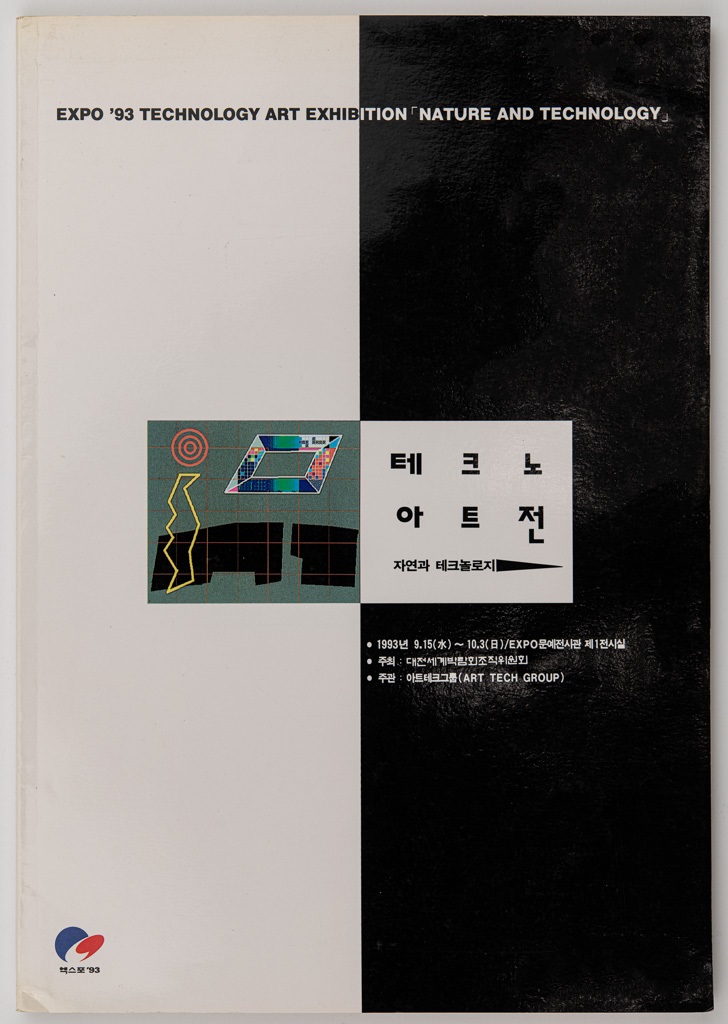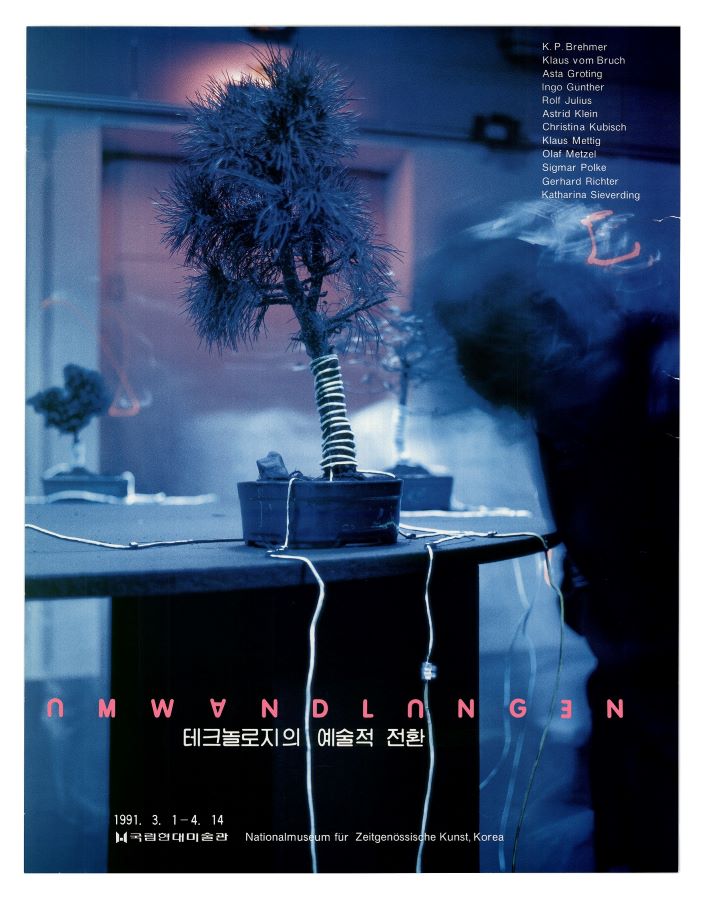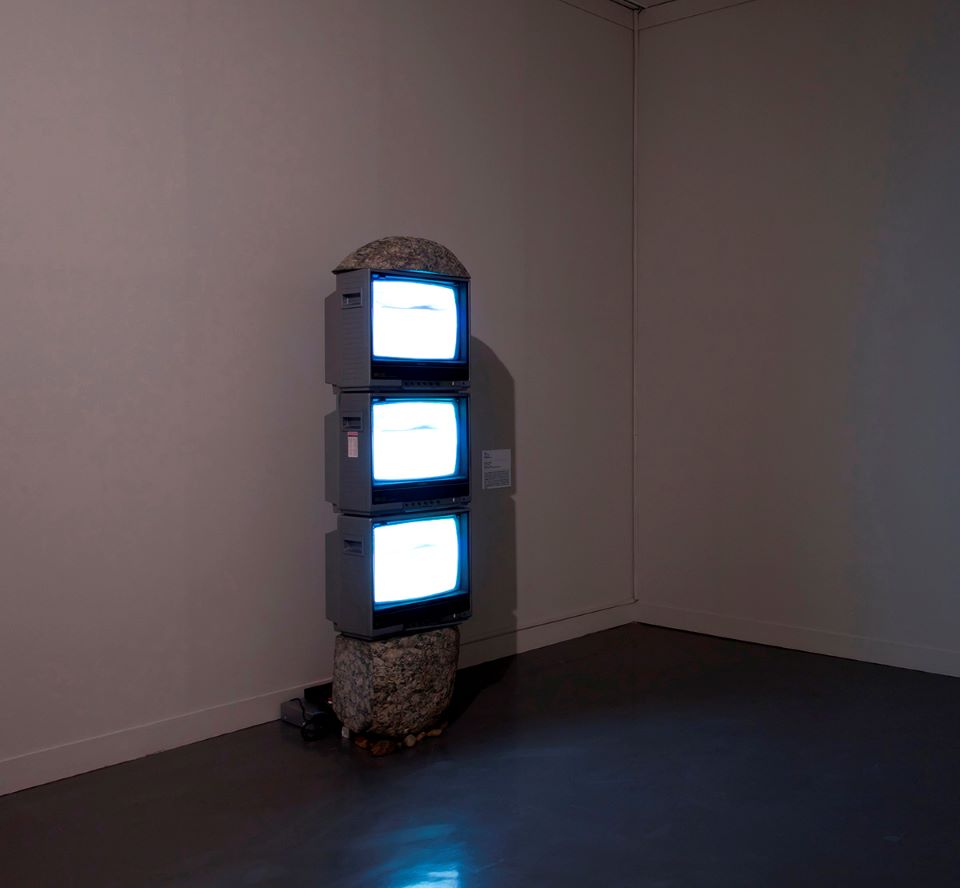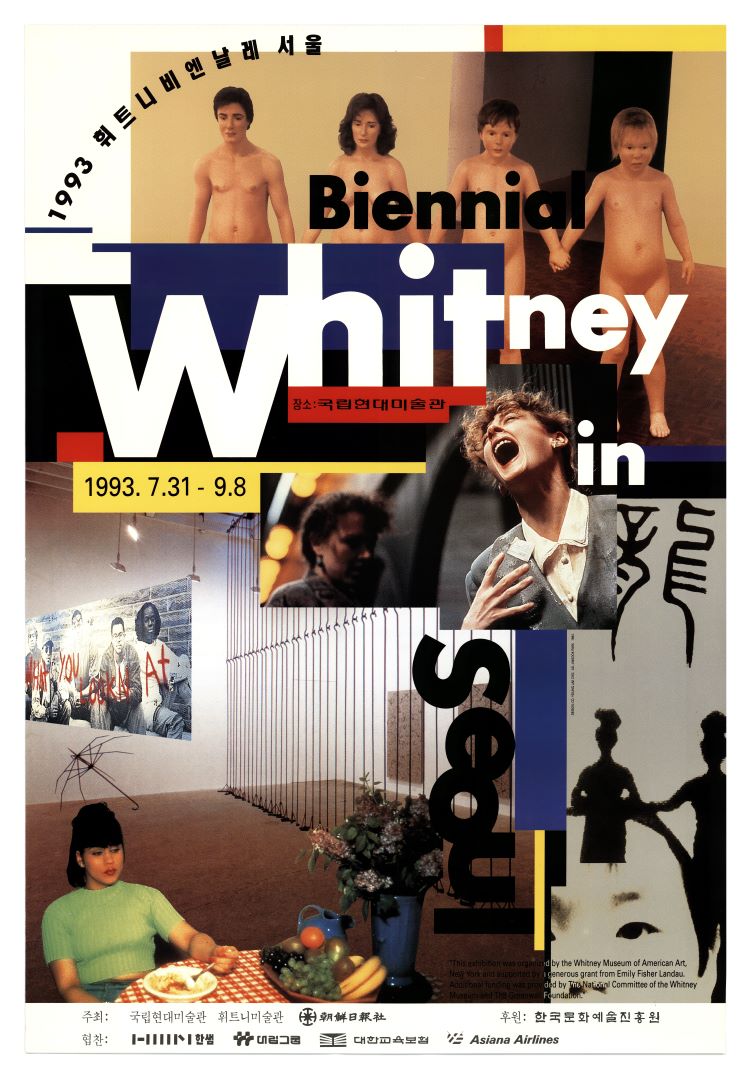
Expo '93 Technology Art Exhibition: Nature and Technology, Catalog, 1993, MMCA Art Research Center Collection, Gift of Park Sungwoo
Daejeon Expo '93
* Source: Multilingual Glossary of Korean Art by Korea Arts Management Service
Related
-

Video art
A genre of modern art that uses video as a medium. After Paik Nam June created the first works of video art in 1963, the genre spread internationally. Video art explored new artistic possibilities using advanced technology and embodied a rejection of conventional art media. Video art was quick to drawn critical attention because of the relative immediacy that underlies the creation and display of such works, and the efficiency of the medium as means to portray and interlink a large number of images. Following Paik Nam June ’s early experiments with TV monitor installations in the 1960s, in the 1970s new forms of work emerged that combined video and performance art.
-

Technology art
The convergence of, or the attempts to fuse, art and science, which particularly arose as advances in scientific technology after World War II inspired artistic creation. Cybernetics and system theory, based on idealist thinking that emerged in the 1960s, and held that “scientific technology will accelerate human progress”, greatly influenced the creation of art based on modern technology. Later, this interest would expand into the realms of internet art, laser art, and holographic art. Toward the later 1970s, technological approaches to art merged with popular art, which led to the development of video games, cyberpunk novels, techno music, and deconstructionist graphic design. In Korea, Kang Kukjin’s 1967 work combining neon and stainless steel and AG group’s Kwak Hoon’s optical installation using electronics in his solo exhibition at Shinmoon Center in 1968 are representative works of early Korean digital art. In 1976, Kim Soungui videotaped his performance during his stay in Paris, and Park Hyunki and Lee Kangso submitted digital technology works to the Daegu Contemporary Art Festival in the mid-1970s.
-

Media art
Media art refers to artworks produced using media scientific technology. It is also called new media art. The term became popularized as it was used by Les Levine in the Software exhibition held at the Jewish Museum in New York in 1970. Media art utilizes as its main media the primary means of communication in contemporary society, including books, magazines, newspapers, films, radio, televisions, videos, and computers. In and after the 1980s, a vast body of works that were based on computer technology and emphasized interaction between them and the audience were created, leading to the emergence of interactive art.







